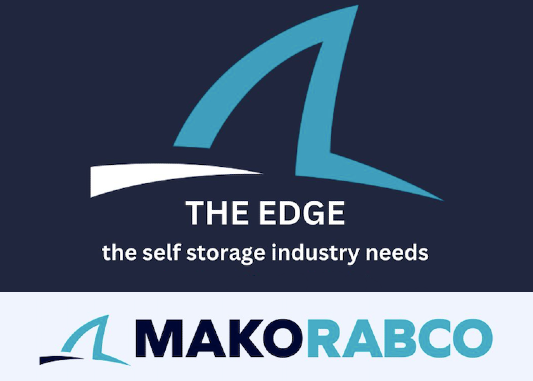4 Common Methods For Investing In Self-Storage
The self-storage industry offers an exceptional opportunity for investors looking for stable and recession-resistant income streams in the current investment landscape. With more than 52,000 self-storage facilities generating over $39 billion annually in the U.S. alone, the market's breadth and resilience are apparent. There are several methods an investor might consider when looking to enter this lucrative industry. Each method has its nuances, benefits, and considerations that align with different investor profiles, objectives, and risk tolerances.
1. Buying Your Own Place
Buying your own place involves purchasing an existing self-storage facility or developing a new one. This method is most suited for investors who seek hands-on management and operational control. It offers the potential for high returns through value-add strategies such as facility improvements, operational efficiencies, and marketing enhancements. However, it requires significant capital upfront and involves ongoing operational responsibilities, making it a better fit for those with industry experience or the willingness to put time into mastering the operational aspects of self-storage.
This approach is typically capitalized by a mix of cash invested by the owner and debt funding from a financial institution. Acquiring a facility in this manner does not require that the investor be accredited.
2. Joining a Big Group (REITs or Real Estate Investment Trusts)
Investing in self-storage REITs is a way to gain exposure to the industry without the complexities of direct management. REITs pool money from many investors to purchase and manage real estate portfolios, offering investors liquidity and the benefit of receiving dividends. This method particularly appeals to those seeking passive investment opportunities with less risk and lower capital requirements. While it provides less control over individual investments, it offers diversification and professional management.
These are the seven largest and most well-known REITS currently:
- Public Storage (PSA): Known as the largest self-storage REIT, Public Storage has a robust portfolio and is recognized for its sustainability efforts. It's listed on the NYSE and is part of the S&P 500 and FT Global 500.
- Extra Space Storage (EXR): The second largest in the U.S., this REIT is praised for its sustainability and long-term goals, providing various storage solutions, including climate-controlled units.
- CubeSmart (CUBE): Ranking the third largest in the U.S., CubeSmart focuses on offering affordable and efficient storage solutions. It is known for consistent dividends and a stable growth model.
- Global Self Storage, Inc. (SELF): This self-managed REIT specializes in high-end storage solutions, like wine storage and climate-controlled units, serving a niche market with a high dividend yield.
- SmartStop Self Storage REIT (STSFF): SmartStop is a self-managed REIT offering a wide range of storage solutions. It is known for its premium features and high dividend yield.
- National Storage Affiliates (NSA): It aims to cover both high-quality and more affordable sections of the storage market, emphasizing transparency and corporate responsibility.
- Life Storage, Inc. (LSI): Life Storage is highlighted for its comprehensive self-storage solutions, making it one of the top choices for investors looking for stable self-storage REITs.
An investor does not need to be accredited to invest in a publicly traded real estate investment trust (REIT). Anyone who opens a brokerage account can buy shares in a REIT listed on major stock exchanges, just like any other public stock. The investor can also purchase shares in a REIT mutual fund or exchange-traded fund (ETF).
3. Teaming Up with Experts (Private Equity Funds)
Private equity funds specializing in self-storage allow investors to contribute capital to a fund that will then be used to acquire and manage a portfolio of self-storage assets. This method offers access to high-quality investments that might be otherwise inaccessible to individual investors. It requires a higher minimum investment compared to REITs but offers the potential for higher returns, given the focused expertise of fund managers in identifying value-add opportunities within the self-storage sector.
Private equity funds are typically available only to accredited investors. The investor should refer to current SEC regulations to assess their qualification. The fund manager usually requires paperwork to prove that the candidate investor meets SEC requirements.
Pooling Money Together (Syndications)
Syndication involves pooling funds from multiple investors to purchase or recapitalize a self-storage facility. This method lowers the individual capital requirement, making it available to a broader range of investors. Syndications are typically managed by experienced operators who handle all aspects of the investment, from acquisition to operation and eventual sale. This method offers investors a balance between the hands-off nature of REITs and the direct involvement of owning a facility, with the added benefit of potentially higher returns due to the targeted nature of the investments.
Websites like StorageTrader, FundRise, CrowdStreet, and RealtyMogul make it easier and more accessible for investors to enter the syndication space with lower initial investments.
Investors are advised to perform due diligence on both the platform and the deal being offered. These investment platforms usually require the investor to certify their identity and accreditation status. They offer the advantage of providing deals for investors' consideration, as simply as shopping on Amazon, thereby saving considerable time on the investor's part in locating investable opportunities.
Why Choose One Method Over Another?
The choice among these investment methods depends on several factors, including the investor's capital availability, risk tolerance, desired level of involvement, and investment horizon. Direct ownership and syndications offer more control and potentially higher returns but require greater capital and active management. In contrast, REITs, private equity funds, and crowdfunding present more passive investment opportunities with varying degrees of liquidity, capital requirements, and exposure to risk.
Investors leaning towards hands-on management might prefer direct ownership or syndications, relishing the operational control and the challenge of enhancing asset value. Investors who join syndications are encouraged to review the operating agreement to fully understand their level of control. Those favoring a hands-off approach might find REITs or private equity funds more appealing, benefiting from professional management and diversification without the day-to-day operational concerns.
In conclusion, the self-storage sector offers a robust investment landscape with multiple entry points for investors. Whether through direct ownership, REITs, private equity funds, syndications, or crowdfunding, each method presents distinct advantages and considerations. By carefully assessing their investment goals, capital availability, and risk tolerance, investors can select the method that best aligns with their strategic objectives, paving the way for a successful venture into the growing and resilient world of self-storage investing.
–
Alese Johnston, CSSM, is the co-founded of StorageTrader. She can be reached at alese@storagetrader.com. Read more on MSM about StorageTrader, the self-storage investment platform.
The content provided in this article is intended to provide helpful, thought-provoking information on the subjects discussed. The publisher and the author are not responsible for any actions you take or do not take as a result of reading this article and are not liable for any damages or negative consequences from action or inaction to any person reading or following the information in this article. References are provided for informational purposes only and do not constitute an endorsement of any websites or other sources. Readers should also be aware that the websites referenced in this article may change or become obsolete.
More Content
Popular Posts
The self storage industry is in a precarious...
Joe Shoen, CEO of U-Haul, has had enough.
Like its name implies, Surprise, Ariz., a...
Joe Shoen has had enough.
In a record-breaking deal finalized May 12,...
Senate Bill 709 (SB709) has many in the...
Donald Trump has just reclaimed the White...
The question of “abandonment” of stored...
Self-storage operators wear a lot of hats....
In 1992, Clinton strategist James Carville...
Recent Posts
When Neville Kennard left for a work trip to...
Self-storage software is no longer...
The self-storage industry continues to...
Fires in California. Tornadoes in Kansas....
From policy pivots in Ottawa to tariff...
Self-storage operators have struggled to...
Their signature red coats may draw attention...
Nailing down Josh and Melissa Huff for an...






















.gif)